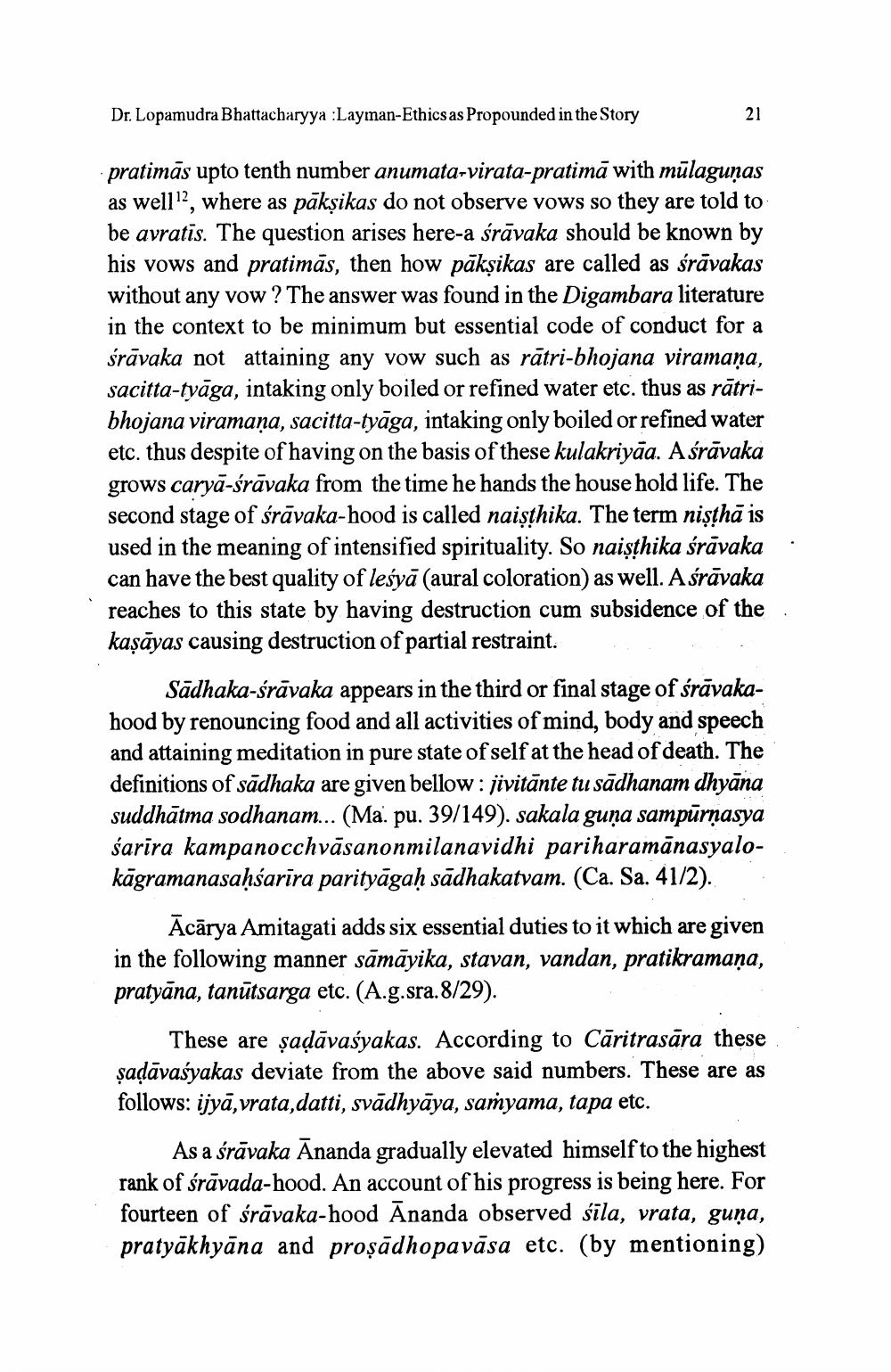________________
Dr. Lopamudra Bhattacharyya :Layman-Ethics as Propounded in the Story
21
pratimās upto tenth number anumata-virata-pratimā with mūlagunas as well", where as pākṣikas do not observe vows so they are told to be avratīs. The question arises here-a śrāvaka should be known by his vows and pratimās, then how pākṣikas are called as śrāvakas without any vow? The answer was found in the Digambara literature in the context to be minimum but essential code of conduct for a śrāvaka not attaining any vow such as rātri-bhojana viramaņa, sacitta-tyāga, intaking only boiled or refined water etc. thus as rātribhojana viramaņa, sacitta-tyāga, intaking only boiled or refined water etc. thus despite of having on the basis of these kulakriyāa. A śrāvaka grows caryā-śrāvaka from the time he hands the house hold life. The second stage of śrāvaka-hood is called naisthika. The term nişthā is used in the meaning of intensified spirituality. So naişthika śrāvaka can have the best quality of leśyā (aural coloration) as well. A śrāvaka reaches to this state by having destruction cum subsidence of the kaṣāyas causing destruction of partial restraint.
Sādhaka-śrāvaka appears in the third or final stage of śrāvakahood by renouncing food and all activities of mind, body and speech and attaining meditation in pure state of self at the head of death. The definitions of sādhaka are given bellow: jivitānte tu sādhanam dhyāna suddhātma sodhanam... (Ma. pu. 39/149). sakala guna sampūrņasya śarīra kampanocchvāsanonmilanavidhi pariharamānasyalokāgramanasaḥśarīra parityāgaḥ sādhakatvam. (Ca. Sa. 41/2).
Ācārya Amitagati adds six essential duties to it which are given in the following manner sāmāyika, stavan, vandan, pratikramana, pratyāna, tanūtsarga etc. (A.g.sra.8/29).
These are şaļāvasyakas. According to Cāritrasāra these şadāvasyakas deviate from the above said numbers. These are as follows: ijyā, vrata,datti, svādhyāya, samyama, tapa etc.
As a śrāvaka Ānanda gradually elevated himself to the highest rank of śrāvada-hood. An account of his progress is being here. For fourteen of śrāvaka-hood Ānanda observed śīla, vrata, guna, pratyākhyāna and proșādhopavāsa etc. (by mentioning)




